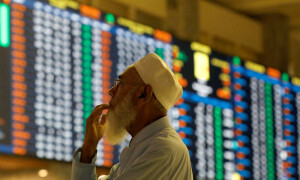Crude oil futures spent much of 2022 surging, as demand for transportation fuels to travel returned while Russia’s invasion of Ukraine and production cuts from the world’s largest oil-producing nations and their allies (OPEC+) squeezed supply.
Brent crude futures rose above $139 per barrel in March as Russia invaded Ukraine, and then later rose again as buyers reckoned with the bottleneck of two years of refinery closures during the pandemic.
As the year winds to a close, both US and Brent crude futures have given up all of the year’s gains.
Here is why:
Depressed demand for fuels
China is the world’s largest crude importer and second- largest oil consuming nation, second only to the United States.
But in 2022, strict government intervention to contain coronavirus cases starkly reduced industrial and economic output as well as demand for travel.
China’s measures depressed oil demand by as much as 30% to 40% in China, according to analyst estimates.
Europe’s winter started off mild, curbing demand for different fuels, including distillates like heating oil, used for power generation and heating homes. Overall economic activity also declined across the globe, most notably in China but also in the United States.
Higher rates and the dollar
To combat rising inflation across the world, central banks enacted a series of interest rate hikes intended to cool off the economy and the labor market. Rising interest rates increased the value of the US dollar, which pressured oil prices as a strengthening dollar makes the greenback-denominated commodity more expensive for other currency holders.
Supply fears were overblown opec+, which comprises the Organization of the Petroleum Exporting Countries (OPEC) and allies including Russia, angered the United States and other Western nations in October when it agreed to cut its targeted output by 2 million barrels per day (bpd), or about 2% of world demand, from November until the end of 2023.
Oil dips, hits lowest since January as U.S. data fans fuel demand fears
OPEC+ said it cut output because of a weaker economic outlook, but the move did not shore up prices. About half of OPEC’s cut was on paper only, as the producing group has been routinely falling short of its targets.
Meanwhile, US production has picked up. Domestic output has grown slowly, but it recently hit 12.2 million barrels per day, the highest since the first wave of the coronavirus pandemic in March 2020.
The market’s rally was also built in part on fears that a series of sanctions imposed on Russia by European nations and the United States would throttle that nation’s supply.
While production in Russia has declined, it has not fallen as fast as anticipated. Earlier this week, G7 democracies and Australia imposed a $60-per-barrel price limit on seaborne Russian crude to hamper Russia’s ability to fund the military offensive in Ukraine.
However, Russian oil is already trading at a discount, making it less likely that the move will disrupt markets.
Speculators flee
Hedge funds and other money managers built big positions in crude contracts in the wake of Moscow’s invasion, but have swiftly exited the market, removing some of the support for oil’s rally.
US data shows that hedge funds’ net long position in Brent crude contracts is near its lowest level over the past 10 years, and the ratio of long positions to short positions is at its lowest since November 2020.



























Comments
Comments are closed.